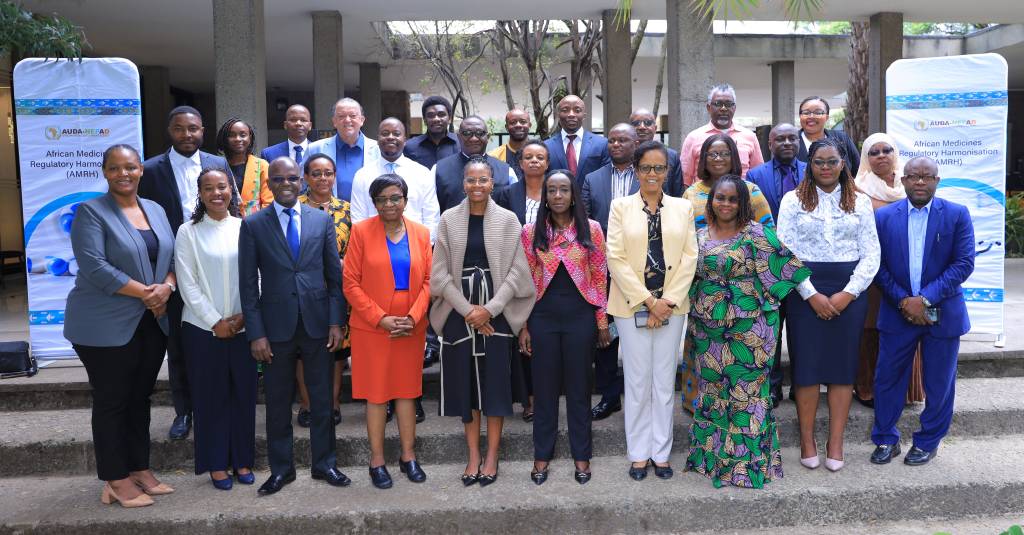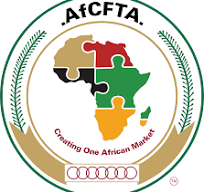Historic! Africa’s Groundbreaking Milestone in Human Medicines Listing
Africa has achieved a record-setting milestone with the listing of its first five human medicinal products under the African Medicine Regulatory Harmonization (AMRH) Initiative, marking a groundbreaking step toward guaranteeing the safety, efficacy, and quality of human medicinal products for Africans.

In what has been described as a trailblazing breakthrough for Africa’s public health sector, the African Medicines Regulatory Harmonisation (AMRH) Initiative has successfully assessed and listed five human medicinal products under the pilot Continental Procedure for Evaluation and Listing of Human Medicinal Products. The five listed products are: Easy Six Vaccine; Bavencio; Gardasil 9 (Prefilled Syringe); Gardasil 9 (Vial); as well as Keytruda.
AMRH is an African Union initiative established in 2009 under the African Union Development Agency (AUDA-NEPAD) framework, serving as the foundation for the African Medicines Agency (AMA) and aimed at harmonizing and streamlining regulatory processes for medicinal products across AU Member States to ensure the safety, efficacy, and quality of medicines.
This milestone, achieved through a joint scientific assessment of the quality, safety and efficacy by the AMRH Initiative’s Evaluation of Medicinal Products Technical Committee (EMP-TC) and the Good Manufacturing Practices Technical Committee (GMP-TC) under the leadership of the AMRH Steering Committee (AMRH SC), marks a major step forward in AMRH Initiative’s over 15 year-long efforts to guarantee African patients faster access to safe, high-quality, and effective medicines.
A statement by AUDA-NEPAD says the pilot directly addresses issues of fragmented regulatory systems, lengthy approval processes, and limited capacity for rigorous product assessments by streamlining regulatory approvals, fostering reliance among African Union Member States, and supporting the operationalization of the African Medicines Agency (AMA).
Launched in November 2023, the pilot was carried out with the technical support of the European Medicines Agency (EMA), the World Health Organization (WHO), among other partners. The EMA further provided technical expertise, leveraging its experience in coordinating regulatory systems through a well-established technical committee model, which played a key role in reaching this important milestone.
The AMRH Secretariat believes these pioneering joint evaluations demonstrate Africa’s ability to conduct high-quality collaborative scientific reviews and facilitate harmonized medicine registration across AU Member States. This landmark seeks to accelerate access to safe, effective, and quality-assured medicines by reducing approval times from years to months, a critical advancement in addressing persistent health challenges like pandemics and epidemics.
The rigorous evaluation process, led by a panel of African experts, resulted in the approval of five priority medicines, including vaccines and therapeutics, following stringent assessments of safety, efficacy, and manufacturing standards. A newly introduced AMRH Green Book will further enhance transparency by providing accessible scientific data on approved products, fostering trust and regulatory collaboration among African Union Member States.
Africa’s Pioneering Continental Listing of Human Medicines
Dr. Tumi Semete-Makokotlela, CEO of South African Health Products Regulatory Authority (SAHPRA) and Chair of the AMRH Steering Committee, described Africa’s first-ever continental listing of human medicinal products under the auspices of the AMRH Initiative as a historic and significant milestone as well as a step toward harmonized regulatory processes across Africa through strengthening of the capacity of African National Regulatory Authorities (NRAs) to efficiently evaluate and approve priority medicines.
Dr Semete-Makokotlela said this unified approach to listing of human medicinal products in Africa aims to streamline access to safe, effective, and quality medicinal products as outlined in the vision of AMA which she said demonstrates Africa’s ability to make regulatory decisions that align with national and regional priorities towards addressing key public health challenges from pandemics to epidemics.
“The procedure, which reduces duplication and ensures timely access to life-saving medicines, is expected to shorten the registration process from years to mere months or weeks. This achievement is central to the vision of the African Medicine Regulatory Harmonization initiative, which aims to strengthen Africa’s regulatory systems and ensure timely access to safe, quality, and effective medicinal products,” the AMRH Steering Committee Chair noted.
Dr Semete-Makokotlela, therefore, called on African NRAs to integrate the continental procedure on evaluation of medicinal products into their national frameworks to enhance regulatory collaboration and create impactful healthcare systems. “This listing procedure brings us closer to achieving the health and development objectives outlined in the African Union’s Agenda 2063 and the Africa Health Strategy, ensuring that African patients have faster access to life-saving medicines while strengthening the continent’s capacity to regulate its medicinal products.”
A Rigorous Evaluation of Priority Medicines
Ms Aude Perine Minyem Ngombi, Chair of the AMRH’s Evaluation of Medicinal Products Technical Committee (EMP-TC), directly responsible for the listing, said the continental listing of the five human medical products followed an extensive science-based evaluation of safety, efficacy, and quality, ensuring that all the medicines and vaccines submitted to this process are issued with a positive opinion and receive approval by the steering committee.
“The introduction of the AMRH Green Book marks a significant step in improving regulatory transparency, allowing all stakeholders to access information on listed products and the scientific rationale behind their approvals. This tool will enhance confidence in the continental listing process and facilitate regulatory reliance among AU Member States,” said the AMRH EMT-TC Chair.
Ms Ngombi described the listing of the five human medicinal products as the outcome of a rigorous review of medicinal product dossiers conducted by experts who were objectively and meritoriously selected from across Africa, which she believes demonstrates their collective ability to come together as Africans and conduct high-quality joint assessment reviews.
“Firstly, we look forward to expanding the number of products evaluated under this mechanism and integrating lessons from this pilot into future reviews. Secondly, strengthening collaboration with Regional Economic Communities (RECs) and African Union Member States will be key to ensuring the listed products gain swift national approvals. And finally, we remain committed to enhancing scientific capacity across Africa to maintain and improve the group,” assured Ngombi.

Toward Harmonized Continental Medicines Regulatory Systems
Ms Chimwemwe Chamdimba, Head of the AMRH Programme, described the first-ever listing of human medicinal products at the continental level as a significant milestone for Africa was part of the AMRH Initiative’s 15-year efforts to enable the continent adopt common standards for the regulation of medicines so as to unify Africa’s medicines regulatory systems in a bid to combat substandard and fake products.
Ms Chamdimba identified the challenges militating against the realization of the AMRH’s vision to be inconsistent legislative frameworks, sluggish registration processes, delays in approval decisions as well as the limited technical and financial capacities of NRAs, calling for a unified approach to addressing these challenges.
She recalled how in November 2023, the AMRH Initiative launched a pilot continental procedure to evaluate and list human medicinal products. “Over 16 months, the Evaluation of Medicinal Products (EMP) and Good Manufacturing Practice (GMP) Technical Committees collaborated to assess dossiers and conduct inspections. This rigorous process ensured that each listed product met the highest standards of safety, quality, efficacy, and GMP compliance.”
Ms Chamdimba said following SAHRA’s scientific review, the first five medicinal products were successfully approved by the AMRH SC, adding that the process demonstrates the fact that the continent was growing in its regulatory capacity and reinforces Africa’s commitment to build a reliable and self-sustained medicine regulatory system.
“Beyond improving access to essential medicines, this milestone has far-reaching economic benefits. The harmonized listing process eliminates duplication in regulatory processes, reducing costs and approval timelines for pharmaceuticals on the continent. This creates a more predictable and efficient business environment, encouraging investments in local production and innovation.
“As we celebrate this achievement, we look forward to scaling up the continental listing mechanism, ensuring more life-saving medical products become available to African patients. AMRH remains committed to building a foundation for the African Medicines Agency, leveraging support from AU Member States, partners, and stakeholders to drive economic growth and enhance public health,” Ms Chamdimba stated.
EMA’s Endorsement of Africa’s Medicines Regulatory Progress
Mr Martin Harvey, Head of International Affairs at the European Medicines Agency (EMA), acknowledges the collaborative efforts to establish the AMA and emphasized the importance of strong partnerships of various partners namely the Bill and Melinda Gates Foundation, the EU Global Gateway Strategy, and the European Commission’s MAV+ Initiative on manufacturing and access to vaccines, medicines, and health technologies.
“The pilot phase of MAV+ supports the AMRH Initiative’s five-year plan to operationalize AMA. The pilot phase is a bold step forward in the mission to provide safe, effective, and accessible medicines for all Africans. Today is about celebrating the first successes of the pilot phase and looking forward to the other products still under review. We need feedback from committee members, industry stakeholders, and partners to strengthen continental processes and procedures,” Harvey said.
Harvey highlighted the importance of providing stakeholders with robust and transparent scientific assessments that can be conducted efficiently within a regulatory network and referenced the EMA’s 30 years of experience in establishing a successful model for medicine regulation, grounded in reliance, work-sharing, mutual recognition, common legislation, and assessment standards.
“AMA’s success hinges on strong synergy between regional and national NRAs. A strong continental regulator depends on strong regional systems and national agencies – the three go absolutely together. We had a powerful exchange of knowledge and insights on how the EMA’s system operates and how it could inform the work of the EMP and GMP TCs as part of the African continental regulatory system,” Harvey stressed.
This groundbreaking landmark in continental human medicines regulation represents more than just a bureaucratic milestone; it signals Africa’s growing autonomy in healthcare governance and its commitment to safeguarding public health through collaborative and science-driven solutions. As the AMRH initiative gains momentum, it will pave the way for a future where timely access to life-saving medicines becomes the norm rather than the exception in Africa.
This milestone culminates over a decade of efforts to overcome Africa’s fragmented regulatory systems, sluggish approvals, and capacity gaps that once hindered medicine access, thanks to the strong backing of international partners like the EMA. The assessment also sets the stage for AMA to emerge as a self-reliant regulatory authority, bolstering access to both healthcare and economic growth through streamlined processes and local pharmaceutical investment.















